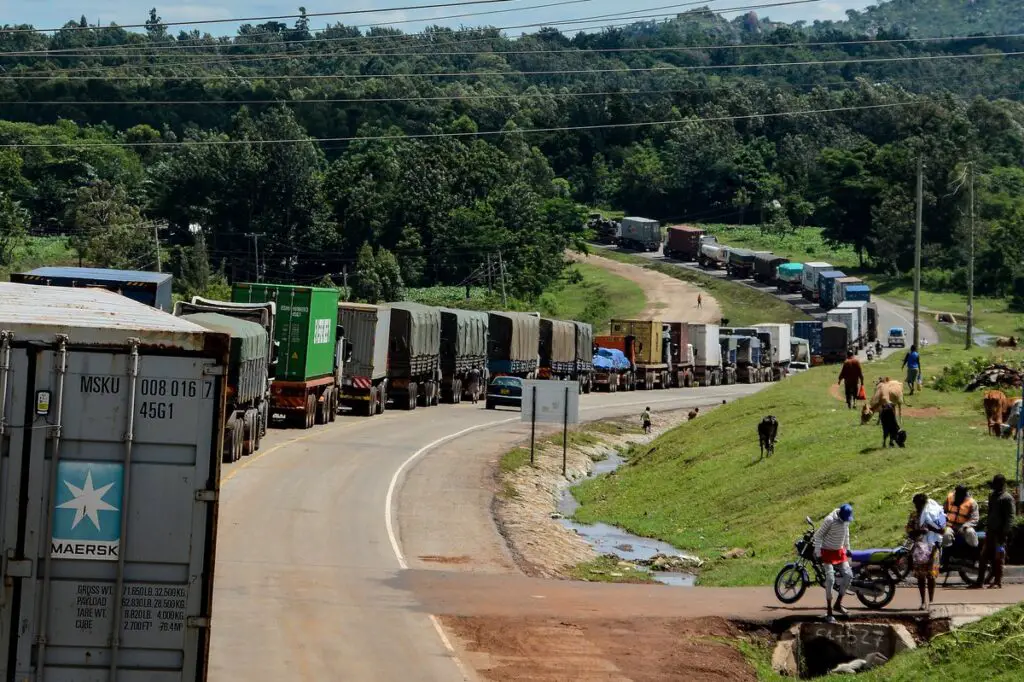Africa is huge continent with untapped potential. With the rest of the world opening up for the best international trade and travel relations, Africa is learning and following the same path, with countries such as Uganda, Kenya and Rwanda easing entry restrictions by issuing visa on arrival and hence turning themselves towards open borders opportunities as members of the East African Community (EAC).
Unrestricted movement of people and goods between African countries holds the key to unlocking this trade potential. That is why trade analysts are touting the African Continent Free Trade Area (AfCTA) as a game changer in inter-Africa trade.
According to United Nations Conference on Trade and Development (UNCTAD), Intra-African trade is currently low at 14.4 percent of total African exports. UNCTAD estimates that the AfCFTA could boost intra-African trade by about 33 percent and cut the continent’s trade deficit by 51 percent.
The possibility of more open borders will create a huge market for agricultural products, minerals and industrial products that could transform agricultural supply chains and communities in need of food stuff. It will also be the beginning of the journey towards food security and cut imports from outside the continent.
Various economic blocs across the region such as Southern African Development Community (SADC) and EAC are solidifying their relations to improve their economies which are characterized by lack of competitiveness and diversification.
READ:Rwanda opens borders to hundreds fleeing DRC following volcanic eruption
Open border, open opportunities
With a population of 1.3 billion, Africa’s opportunity to grow and distribute wealth is immense and urgent. This calls for a strategic approach to boost productivity and economic growth over time and space.
In that sense, open borders have something essential they bring to the table. Open borders enable supply chains to function effectively, increase GDP, influence better travel, higher knowledge transfer, technological progress, and international trade.
However, on the larger scale it is important to recognize a few issues that make the entire open borders conversation essential. According to data from UNCTAD the continent’s current untapped export potential amounts to $21.9 billion, equivalent to 43 percent of intra-African exports.
As a region with abundant resources, Africa has been striving to maximize its export receipt via available tools such as regional trading blocks. Further, the UNCTAD data shows that an additional $9.2 billion of export potential can be realized through partial tariff liberalization under the AfCFTA over the next five years.
Further, to unlock the untapped potential, various intra-African non-tariff barriers, including costly non-tariff barriers, infrastructure gaps, and market information gaps, need to be successfully addressed. This requires joint efforts under the AfCFTA.
“In addition, long-term cooperation in investment and competition policies will be essential to overcoming market dominance by a few actors and to reducing structural and regulatory barriers to market entry.
Intra-African trade comprises 61 percent processed and semi-processed goods, suggesting higher potential benefits from greater regional trade for transformative and inclusive growth,” a 2021 UNCTAD publication argued.
Taking the EU as an example, countries such as Switzerland, Denmark, Germany, Netherlands, UK and France have opened their borders to economic achievements.
EU’s success is a result of border administration and efficiency, and indeed air transport infrastructure, something within the capacities of most African countries such as Ethiopia, Kenya, South Africa and Tanzania.
READ:Uganda, EU trade challenged as more African borders open
Intra-Africa migration
Migration brings a lot of potential but with potential chaos with it. Over the past years we have witnessed Africans migrating to the West and Europe, even risking their lives.
It goes without saying, that failure of economic systems in several African nations such as reminds the region to reassess its economic strategies.
This is despite African Union figures showing that the level of intra-African migration rose from 13.3 million to 25.4 million between 2008 and 2017.
On the other hand, the International Organization for Migration (IOM), argues that’s only half the story. “We really have a very incomplete picture of the most recent trends and mainly also the number of people moving across countries,” Rango Marzia of the IOM’s Global Migration Data Analysis Centre (GMDAC) told the Deutch Welle (DW).
Intra-migration in the region could be a beneficial if welfare and economic systems in host countries are set for success of individuals.
The latter is confirmed by a 2020 IOM report which confirms that 80 percent of Africans responding to a 2017 survey said they had no interest in leaving the continent.
Despite the worse issues of xenophobia in South Africa with migrant workers or the reported cases of Cameroonian migrants feeling unwelcomed in Equatorial Guinea, there is hope across the region especially for growing economies in Rwanda, Tanzania, DRC and Ghana, opening up their economies.
According to a December 2021 publication by Relief Web, urban areas in Nigeria, South Africa, and Egypt are the main destinations for this inter-African migration, reflecting the relative economic dynamism of these locales.
Africa trading giant
The presence of structured and monitored open borders can be a portal to economic achievement. In Africa, trade is largely executed through informal cross-border trade (ICBT). The UNCTAD defines ICBT as trade conducted between neighbouring countries by vulnerable and unregistered traders.
“In Africa, these traders are predominantly women and youth. ICBT is not necessarily illegal in terms of the nature of trade but fails to meet the formal requirements of recognised trade due to the lack of compliance to regulations on customs,” the Africa Portal publication pointed out.
Accordingly, 40 percent of trade in Africa is through ICBT to the point that some refer to ICBT as “Africa’s Real Economy”.
Free trade and free movement of people have the potential to increase communities’ economies, especially through the economic migration which in turn has the capability to enhance remittance flow across the region.
READ:EAC Secretariat lauds Uganda, Rwanda for reopening Gatuna-Katuna border post
